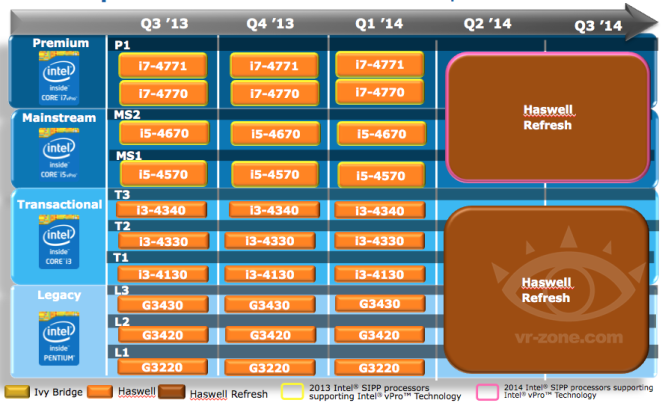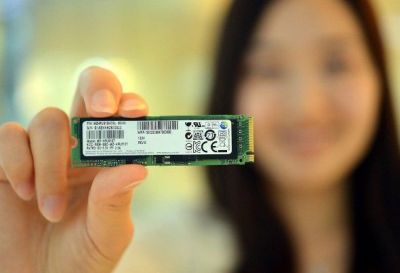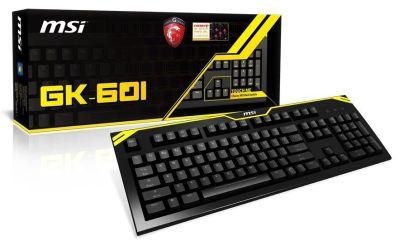From The Blog
-
ConnectWise Slash and Grab Flaw Once Again Shows the Value of Input Validation We talk to Huntress About its Impact
Written by Sean KalinichAlthough the news of the infamous ConnectWise flaw which allowed for the creation of admin accounts is a bit cold, it still is one that…Written on Tuesday, 19 March 2024 12:44 in Security Talk Read 567 times Read more...
-
Social Manipulation as a Service – When the Bots on Twitter get their Check marks
Written by Sean KalinichWhen I started DecryptedTech it was to counter all the crap marketing I saw from component makers. I wanted to prove people with a clean…Written on Monday, 04 March 2024 16:17 in Editorials Read 1476 times Read more...
-
To Release or not to Release a PoC or OST That is the Question
Written by Sean KalinichThere is (and always has been) a debate about the ethics and impact of the release of Proof-of-Concept Exploit for an identified vulnerability and Open-Source…Written on Monday, 26 February 2024 13:05 in Security Talk Read 1030 times Read more...
-
There was an Important Lesson Learned in the LockBit Takedown and it was Not About Threat Groups
Written by Sean KalinichIn what could be called a fantastic move, global law enforcement agencies attacked and took down LockBit’s infrastructure. The day of the event was filled…Written on Thursday, 22 February 2024 12:20 in Security Talk Read 874 times Read more...
-
NetSPI’s Offensive Security Offering Leverages Subject Matter Experts to Enhance Pen Testing
Written by Sean KalinichBlack Hat 2023 Las Vegas. The term offensive security has always been an interesting one for me. On the surface is brings to mind reaching…Written on Tuesday, 12 September 2023 17:05 in Security Talk Read 2059 times Read more...
-
Black Kite Looks to Offer a Better View of Risk in a Rapidly Changing Threat Landscape
Written by Sean KalinichBlack Hat 2023 – Las Vegas. Risk is an interesting subject and has many different meanings to many different people. For the most part Risk…Written on Tuesday, 12 September 2023 14:56 in Security Talk Read 1722 times Read more...
-
Microsoft Finally Reveals how they Believe a Consumer Signing Key was Stollen
Written by Sean KalinichIn May of 2023 a few sensitive accounts reported to Microsoft that their environments appeared to be compromised. Due to the nature of these accounts,…Written on Thursday, 07 September 2023 14:40 in Security Talk Read 2039 times Read more...
-
Mandiant Releases a Detailed Look at the Campaign Targeting Barracuda Email Security Gateways, I Take a Look at What this all Might Mean
Written by Sean KalinichThe recent attack that leveraged a 0-Day vulnerability to compromise a number of Barracuda Email Security Gateway appliances (physical and virtual, but not cloud) was…Written on Wednesday, 30 August 2023 16:09 in Security Talk Read 1943 times Read more...
-
Threat Groups Return to Targeting Developers in Recent Software Supply Chain Attacks
Written by Sean KalinichThere is a topic of conversation that really needs to be talked about in the open. It is the danger of developer systems (personal and…Written on Wednesday, 30 August 2023 13:29 in Security Talk Read 1804 times Read more...
Recent Comments
- Sean, this is a fantastic review of a beautiful game. I do agree with you… Written by Jacob 2023-05-19 14:17:50 Jedi Survivor – The Quick, Dirty, and Limited Spoilers Review
- Great post. Very interesting read but is the reality we are currently facing. Written by JP 2023-05-03 02:33:53 The Dangers of AI; I Think I Have Seen this Movie Before
- I was wondering if you have tested the microphone audio frequency for the Asus HS-1000W? Written by Maciej 2020-12-18 14:09:33 Asus HS-1000W wireless headset impresses us in the lab
- Thanks for review. I appreciate hearing from a real pro as opposed to the blogger… Written by Keith 2019-06-18 04:22:36 The Red Hydrogen One, Possibly One of the Most “misunderstood” Phones Out
- Have yet to see the real impact but in the consumer segment, ryzen series are… Written by sushant 2018-12-23 10:12:12 AMD’s 11-year journey to relevance gets an epic finish.
Most Read
- Microsoft Fail - Start Button Back in Windows 8.1 But No Start Menu Written on Thursday, 30 May 2013 15:33 in News Be the first to comment! Read 116452 times Read more...
- We take a look at the NETGEAR ProSafe WNDAP360 Dual-Band Wireless Access Point Written on Saturday, 07 April 2012 00:17 in Pro Storage and Networking Be the first to comment! Read 87335 times Read more...
- Synology DS1512+ Five-Bay NAS Performance Review Written on Tuesday, 12 June 2012 20:31 in Pro Storage and Networking Be the first to comment! Read 81883 times Read more...
- Gigabyte G1.Sniper M3 Design And Feature Review Written on Sunday, 19 August 2012 22:35 in Enthusiast Motherboards Be the first to comment! Read 80227 times Read more...
- The Asus P8Z77-M Pro Brings Exceptional Performance and Value to the Lab Written on Monday, 23 April 2012 13:02 in Consumer Motherboards Be the first to comment! Read 70838 times Read more...
Displaying items by tag: Performance
Intel Pushes 14nm Broadwell Back to 2H 2014
 |
A Rumor popped up today that claims that Intel’s 14nm Broadwell might be pushed back to 2H 2014. This information comes as a slide that was posted on the site VR-Zone. In the slide it seems to show that the second generation of Haswell is now slated for release later than originally expected 2Q 2014 and with Boradwell slipping with it. The new information (if accurate) means that Intel will be pushing back their expected “tick” for desktop and dropping in a refresh instead (another “tock”?).
Mortal Kombat: Komplete Edition system requirements released
 |
High Voltage Software has released the minimum and recommended configuration for Mortal Kombat: Komplete Edition, PC Edition of the latest sequel of the famous fighting series. Komplete Edition includes three additional fatalities, 15 new skins, and all the fighters who have appeared on consoles in the DLCs. As far as hardware and software requirements are concerned it is worth noting that Windows XP and DirectX 9.0 are not supported.
PCIe SSDs from Samsung
 |
Samsung has begun mass producing of the XP941 line of SSDs, the first PCI Express SSD solution for ultrabooks. XP941 SSDs come in M.2 format and offer superior performance for Ultrabook and other thin notebooks.
HP to release Haswell based device without active cooling
 |
Although there is the opinion that Haswell is still not ready for devices without a fan, it's not an opinion that everybody shares. Specifically, HP is planning device based on the new Intel-based cooling which will be done passively.
New improved Razer Blade
 |
Razer recently introduced refreshed offer of gaming laptops, which now consists of two models. The existing 17-inch Blade model now bears the name Blade Pro, while the "new" Razer Blade is a brand new notebook with 14-inch screen.
G.Skill enters peripherals market at Computex 2013
 |
G.Skill intends to enter into another market segment. The company announced at the Computex presentation their first product lines of the peripherals for gamers.
TRENDNet TEW-812DRU 802.11ac Wireles Dual Band Router Review
 |
When wireless networking was first introduced it was a very cool concept and people bought into it. The problem was that it was also about as slow as dial-up internet was. The good news is that all technologies advance and wireless was non exception. Once the idea caught on we quickly ramped up in speed, but wireless was never quite able to keep up with a wired connection. We saw these connections leap ahead by a factor of 10 while wireless had small incremental speed jumps. All of that changed in 2011 when researchers built up the next specification for wireless speed, 802.11ac. This speed increase more than doubled what wireless was able to do previously. Suddenly wireless was just as fast as a wired connection (in theory). We have a few routers and adapters in the lab and will be taking a look at them. Today we are going to show you the TRENDNet TEW-812DRU AC1750 dual band wireless router.
NETGEAR 802.11ac A6200 USB WiFi Adapter Runs Through The Lab
 |
802.11ac wireless was introduced at CES 2012. Unfortunately when the devices were launched there were no adapters to support it. This meant that people were buying expensive wireless products without having any way to support the speeds they were capable of. Fortunately at CES 2013 a couple of manufacturers started releasing 802.11ac adapters. However, there are two schools of thought about how to implement these adapters. We will be taking a look at both in the next couple of weeks, but we will kick things off with a look at the USB 2.0 NETGEAR A6200 Dual Band 802.11ac WiFi Adapter. Let’s dive in and take a look.
Mechanical keyboards from MSI
 |
MSI has introduced two interesting keyboards designed for gamers, but also for home and business users. Presented model GK-601 and Classic are the mechanical type keyboards with Cherry MX Red switches.
Is The AMD Centurion a Shot In The Arm... Or the Foot?
 |
Some of you might remember the days of the “P” rating CPUs. It was an interesting time when you never really knew what you were actually getting in terms of clock speed. Instead you were able to get a CPU named something like P333 or P500. This was an attempt by some manufacturers to show their “P”erformance rating in relation to Intel’s Pentium. Cyrix, AMD, and a couple of others used this to sell CPUs. Unfortunately everyone knew that the P did not really stand for performance it really meant Pentium equivalency. A Cyrix P667 was supposed to perform as well as an Intel Pentium 667 (at least on paper). Sadly this just confused the market more and we all had the fun of trying to figure out what our CPUs were really doing. Now we might be seeing the trend return, but perhaps in reverse as AMD has announced the Centurion CPU.

